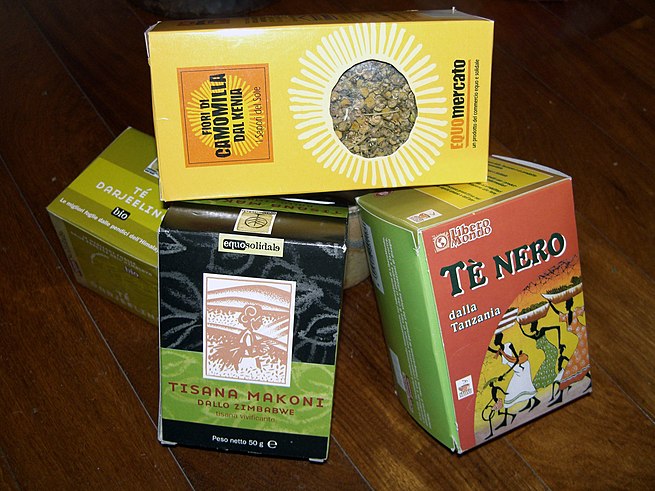
Main Difference
The main difference between Fair Trade and Free Trade is that the Fair Trade is a form of trade and Free Trade is a policy in which countries’ governments do not restrict imports from, or exports to, other countries.
-
Fair Trade
Fair trade is an institutional arrangement designed to help producers in developing countries achieve better trading conditions. Members of the fair trade movement advocate the payment of higher prices to exporters, as well as improved social and environmental standards. The movement focuses in particular on commodities, or products which are typically exported from developing countries to developed countries, but also consumed in domestic markets (e.g. Brazil, India and Bangladesh) most notably handicrafts, coffee, cocoa, wine, sugar, fresh fruit, chocolate, flowers and gold. The movement seeks to promote greater equity in international trading partnerships through dialogue, transparency, and respect. It promotes sustainable development by offering better trading conditions to, and securing the rights of, marginalized producers and workers in developing countries. Fair trade is grounded in three core beliefs; first, producers have the power to express unity with consumers. Secondly, the world trade practices that currently exist promote the unequal distribution of wealth between nations. Lastly, buying products from producers in developing countries at a fair price is a more efficient way of promoting sustainable development than traditional charity and aid.
Fair trade labelling organizations commonly use a definition of fair trade developed by FINE, an informal association of four international fair trade networks: Fairtrade Labelling Organizations International, World Fair Trade Organization (WFTO), Network of European Worldshops and European Fair Trade Association (EFTA). Specifically, fair trade is a trading partnership, based on dialogue, transparency, and respect, that seeks greater equity in international trade. Fair trade organizations, backed by consumers, are engaged actively in supporting producers, awareness raising, and in campaigning for changes in the rules and practice of conventional international trade.There are several recognized fair trade certifiers, including Fairtrade International (formerly called FLO, Fairtrade Labelling Organizations International), IMO, Make Trade Fair and Eco-Social. Additionally, Fair Trade USA, formerly a licensing agency for the Fairtrade International label, broke from the system and implemented its own fair trade labelling scheme, which expanded the scope of fair trade to include independent smallholders and estates for all crops. In 2008, Fairtrade International certified approximately (€3.4B) of products. The World Trade Organization publishes annual figures on the world trade of goods and services.
The fair trade movement is popular in the UK, where there are 500 Fairtrade towns, 118 universities, over 6,000 churches, and over 4,000 UK schools registered in the Fairtrade Schools Scheme. In 2011, over 1.2 million farmers and workers in more than 60 countries participated in Fairtrade International’s fair trade system, which included €65 million in fairtrade premium paid to producers for use developing their communities. According to Fairtrade International, nearly six out of ten consumers have seen the Fairtrade mark and almost nine in ten of them trust it.Some criticisms have been raised about fair trade systems. One 2015 study in a journal published by the MIT Press concluded that producer benefits were close to zero because there was an oversupply of certification, and only a fraction of produce classified as fair trade was actually sold on fair trade markets, just enough to recoup the costs of certification. Some research indicates that the implementation of certain fair trade standards can cause greater inequalities in some markets where these rigid rules are inappropriate for the specific market. In the fair trade debate there are complaints of failure to enforce the fair trade standards, with producers, cooperatives, importers and packers profiting by evading them. One proposed alternative to fair trade is direct trade, which eliminates the overhead of the fair trade certification, and allows suppliers to receive higher prices much closer to the retail value of the end product. Some suppliers use relationships started in a fair trade system to autonomously springboard into direct sales relationships they negotiate themselves, whereas other direct trade systems are supplier-initiated for social responsibility reasons similar to a fair trade system.
-
Free Trade
Free trade is a trade policy that does not restrict imports or exports; it can also be understood as the free market idea applied to international trade. In government, free trade is predominantly advocated by political parties that hold liberal economic positions while economically left-wing and nationalist political parties generally support protectionism, the opposite of free trade.
Most nations are today members of the World Trade Organization multilateral trade agreements. Free trade is additionally exemplified by the European Economic Area and the Mercosur which have established open markets. However, most governments still impose some protectionist policies that are intended to support local employment, such as applying tariffs to imports or subsidies to exports. Governments may also restrict free trade to limit exports of natural resources. Other barriers that may hinder trade include import quotas, taxes and non-tariff barriers, such as regulatory legislation.
There is a broad consensus among economists that protectionism has a negative effect on economic growth and economic welfare while free trade and the reduction of trade barriers has a positive effect on economic growth. However, liberalization of trade can cause significant and unequally distributed losses, and the economic dislocation of workers in import-competing sectors.
